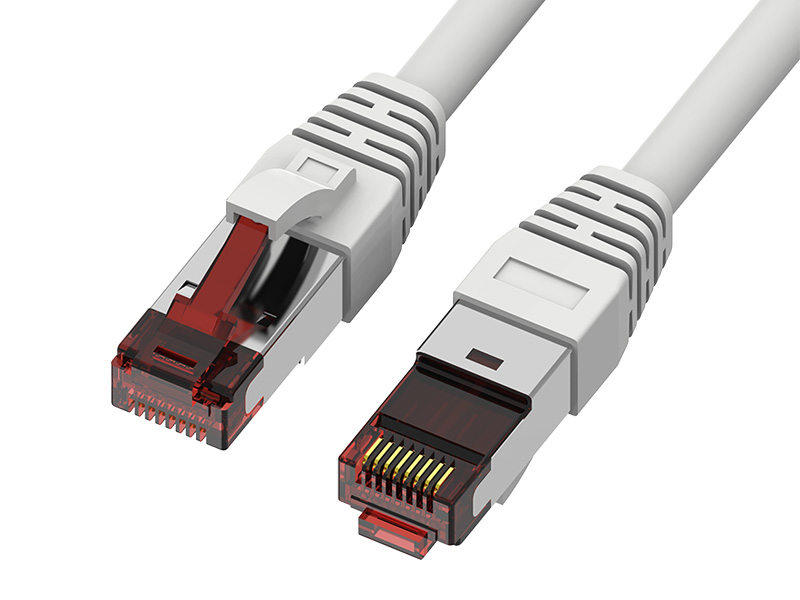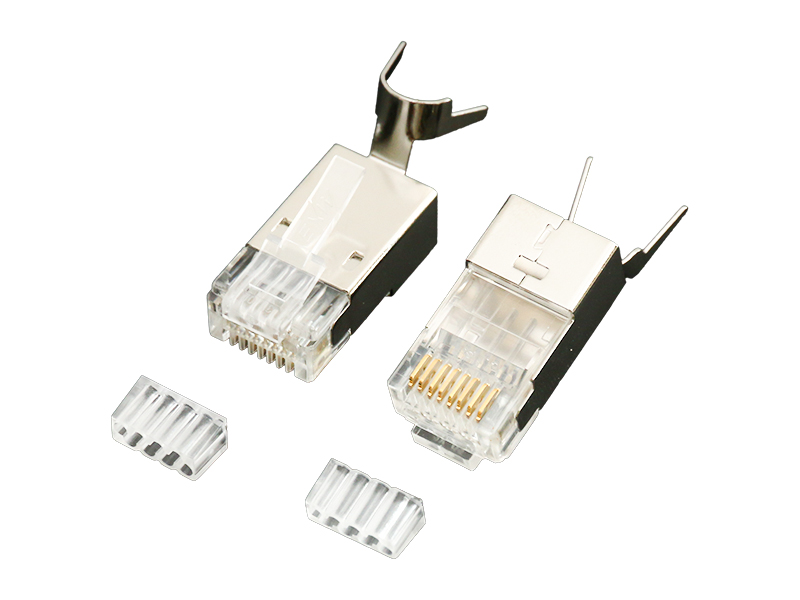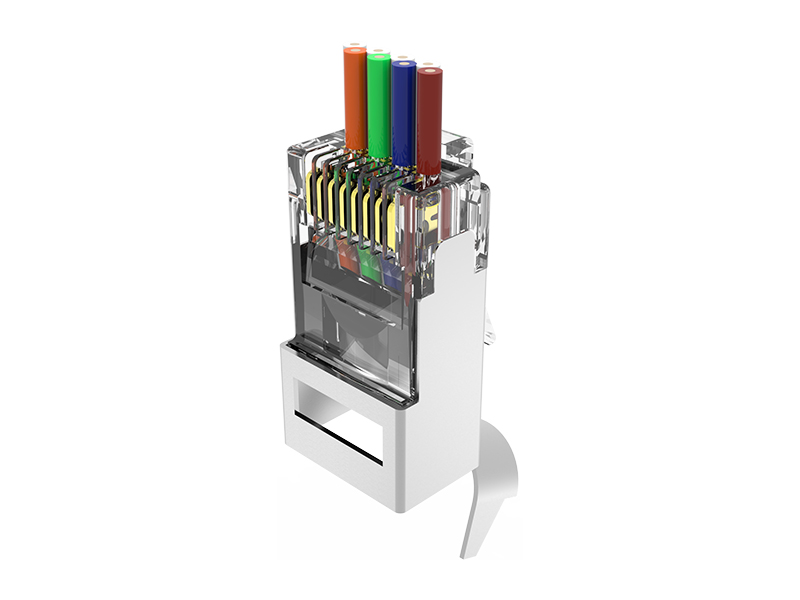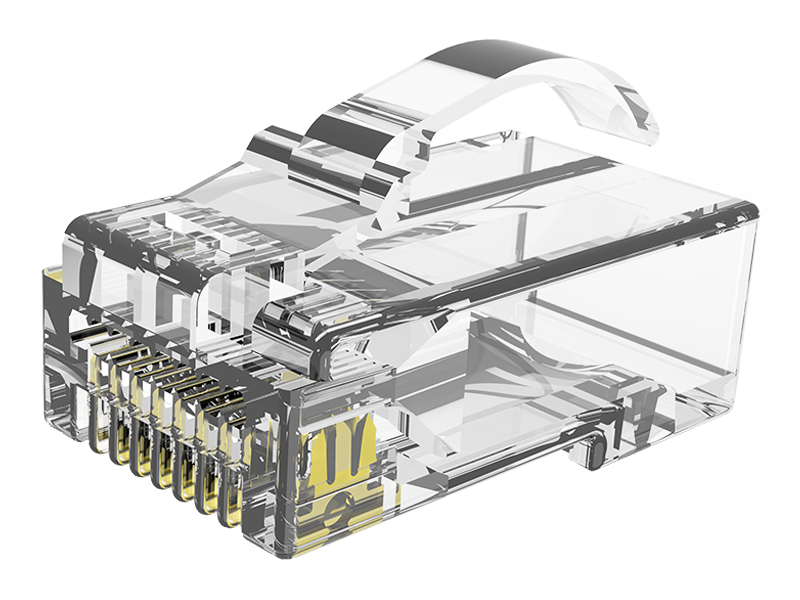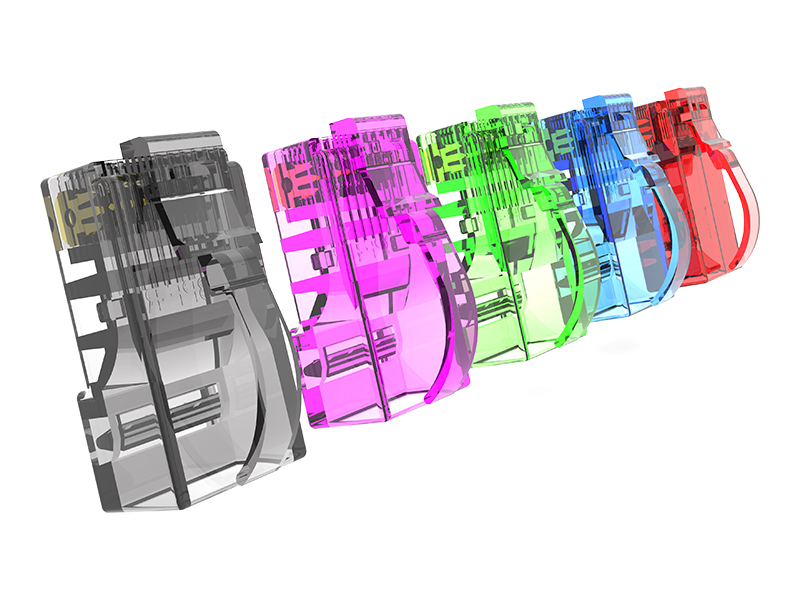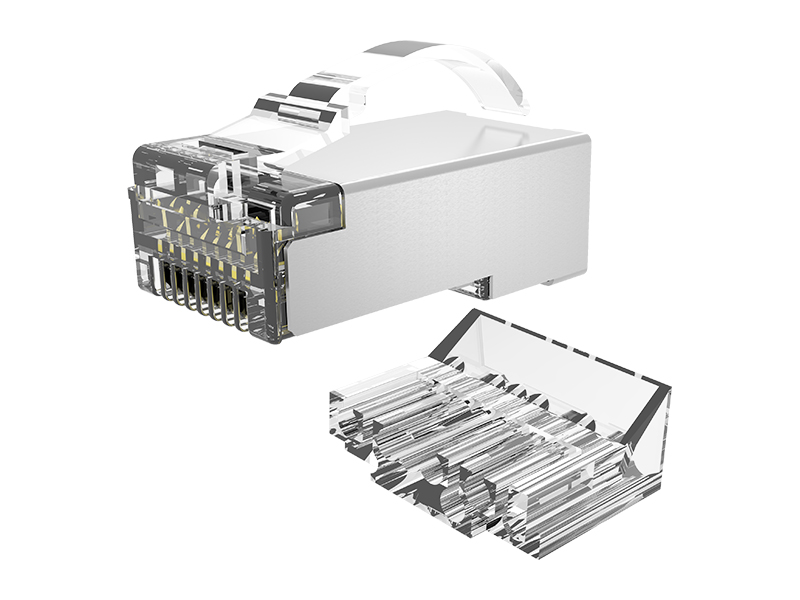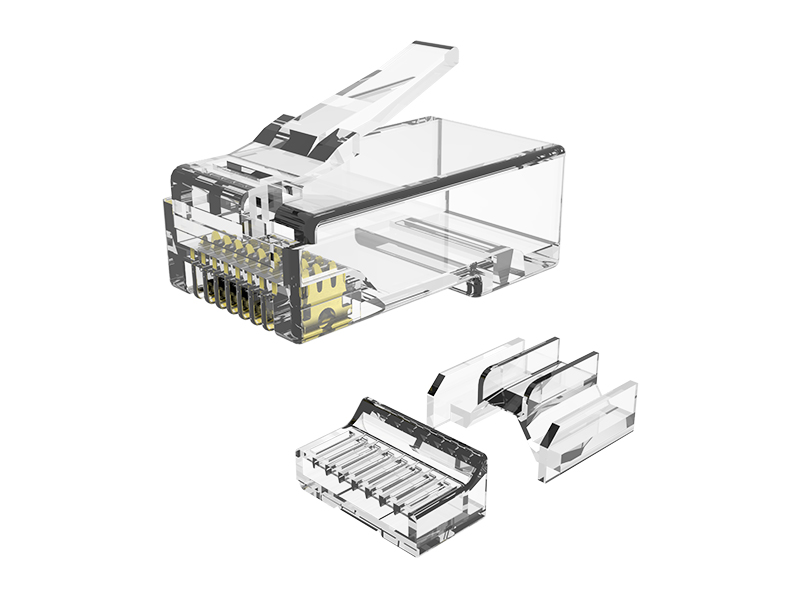Detailed Explanation of Shielded Cat.6a Arched Locking Modular Plug
Content
I. Core Function
Dual Protection Design:
Electromagnetic Interference Resistance: The metal shell (zinc alloy or nickel plating) encases the plug, acting like a "radiation shield" to block signal interference from motors, inverters, and other equipment.
Physical Anti-Drop: The arched locking mechanism (thickened with anti-slip texture) requires thumb pressure to unlock, preventing breakage when the cable is kicked, hooked, or accidentally pulled.
II. Structural Features
Reinforced Locking Mesh: The arched section is thicker than ordinary plugs, making it less prone to breakage from being run over or stepped on.
Grounding Interference Prevention: The plug contains internal metal springs that automatically pierce the cable shielding layer during crimping, diverting interference to the equipment's ground (e.g., switch housing).
Contact Protection: Gold-plated contacts are rust- and oxidation-resistant, remaining functional even after repeated insertion and removal.
III. Applicable Scenarios
Industrial Workshops: Near CNC machine tools and motors—the shielding layer blocks electrical spark interference, and the locking mechanism resists equipment vibration.
Medical Imaging Room: Near MRI and CT equipment – Avoid electromagnetic interference affecting medical data transmission.
Intelligent Building: Elevator control room, power distribution room – Resistant to strong electrical interference; locking clips prevent accidental wire breakage during maintenance.
IV. Installation Precautions
Key Shielding Treatment: The cable's metal shielding mesh must completely cover the internal metal contacts of the plug; otherwise, interference protection will fail.
Locking Clip Usage Tips: A "click" sound when inserting the device indicates it is locked; when unplugging the cable, press the locking clip at an angle (do not pull the cable forcefully).
Wiring Sequence Requirements: Wiring should follow the T568B sequence; wire pairs should be untwisted to ≤1.3 cm (excessive length will reduce speed).
V. Common Problem Avoidance
| Mistake | Consequence | Proper Method |
|---|---|---|
| Shield layer not contacting metal shell | Shielding fails → speed crashes | Visually verify full coverage before crimping |
| Prying latch vertically | Latch snaps | Press at 45° angle to release |
| Using unshielded cable | Zero EMI protection | Pair only with shielded cabling |
VI. Advantages Compared to Unshielded Version
| Scenario | Shielded Cat.6a Arch Latch Plug | Unshielded Plug Risks |
|---|---|---|
| Near factory motors | Zero packet loss – Blocks EMI noise | Frequent disconnects – EMI corrupts signals |
| Sensitive equipment rooms | Prevents static damage – Grounds ESD | Power surges fry ports – No discharge path |
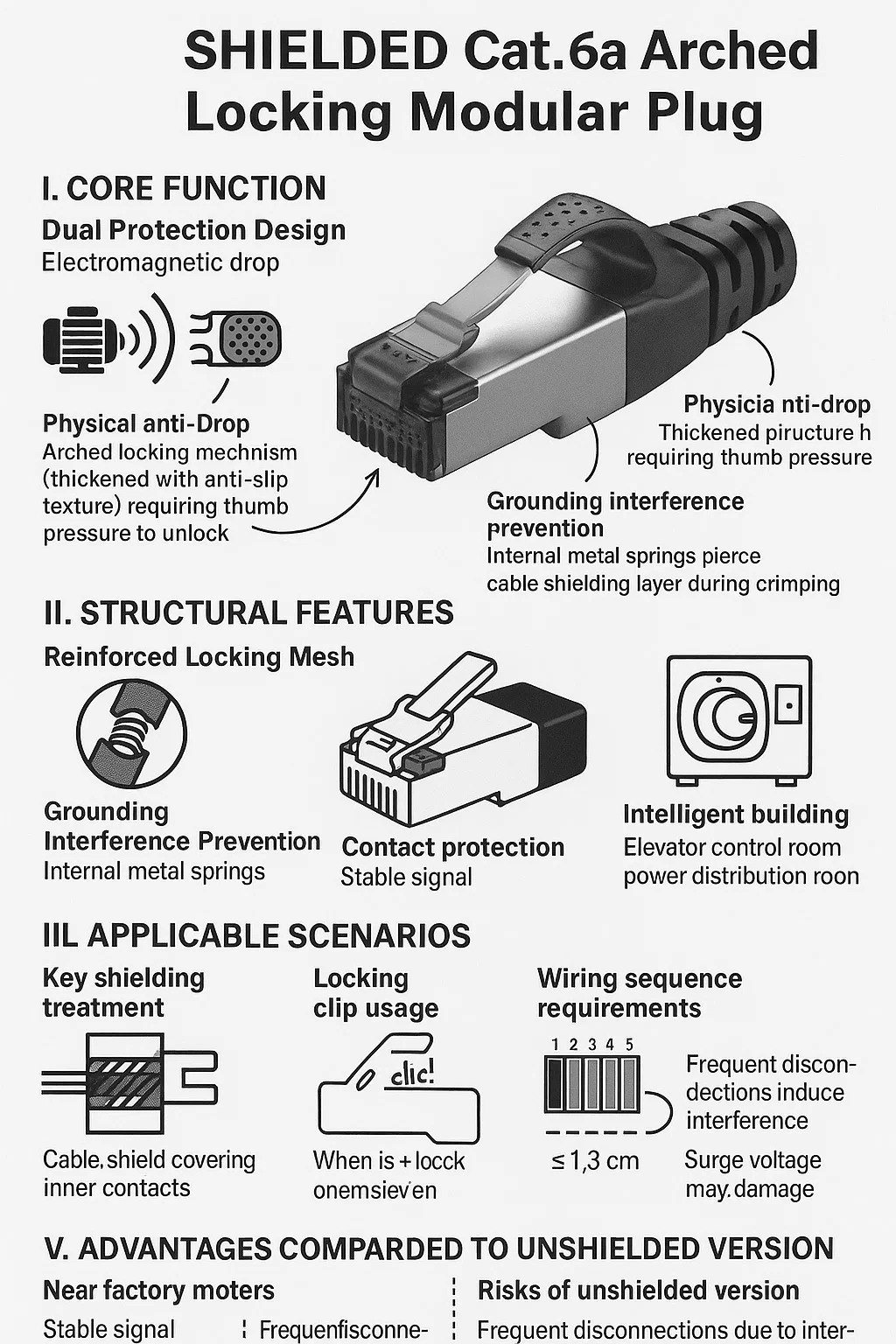



 中文简体
中文简体 English
English Français
Français Deutsch
Deutsch عربى
عربى

